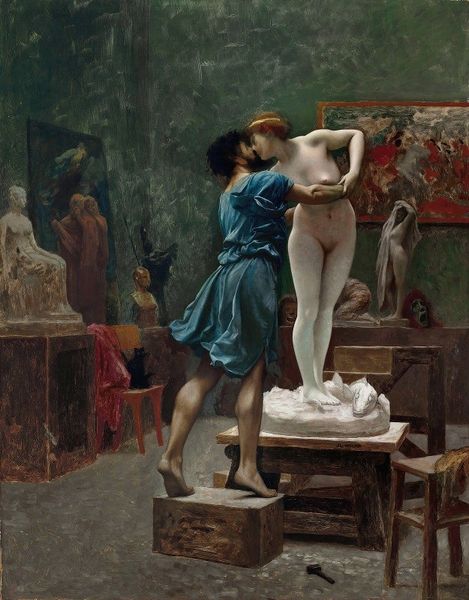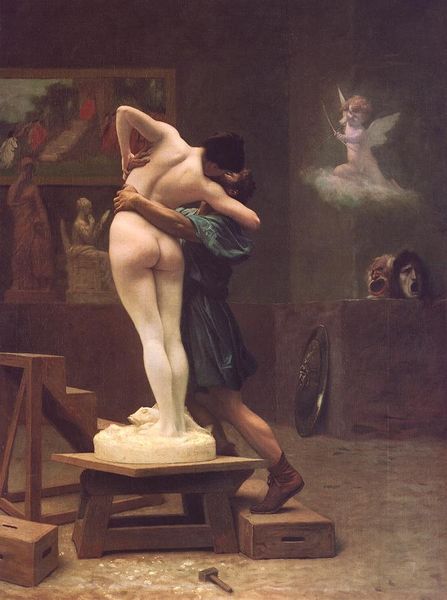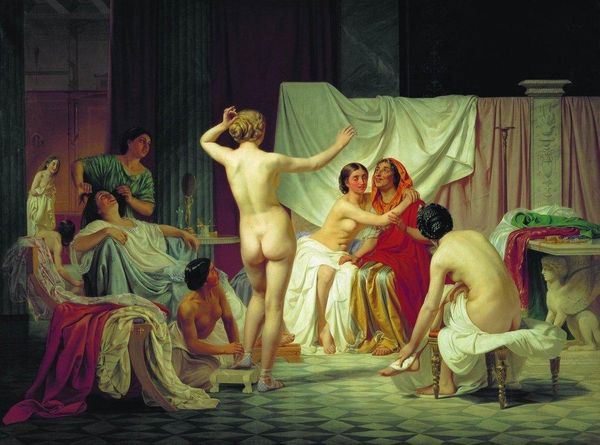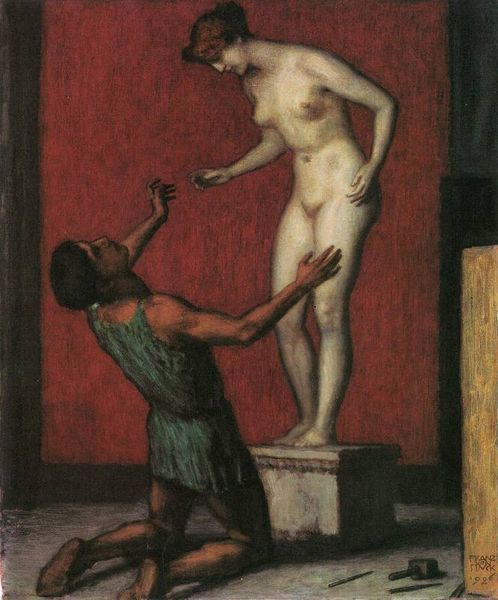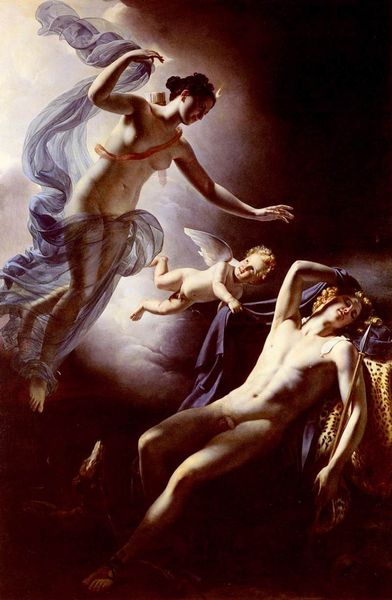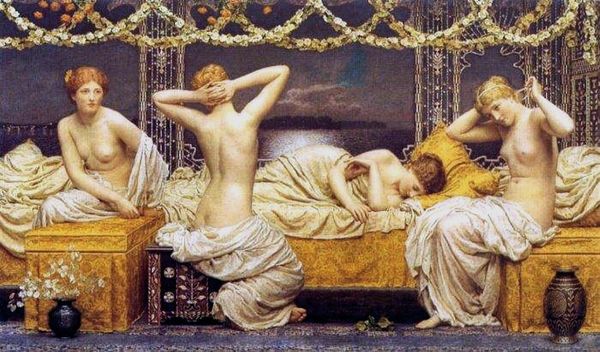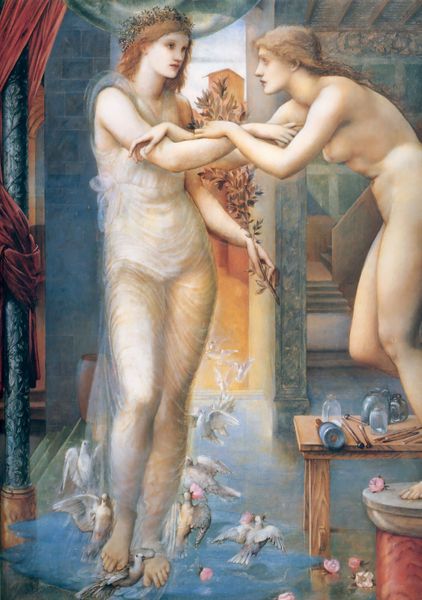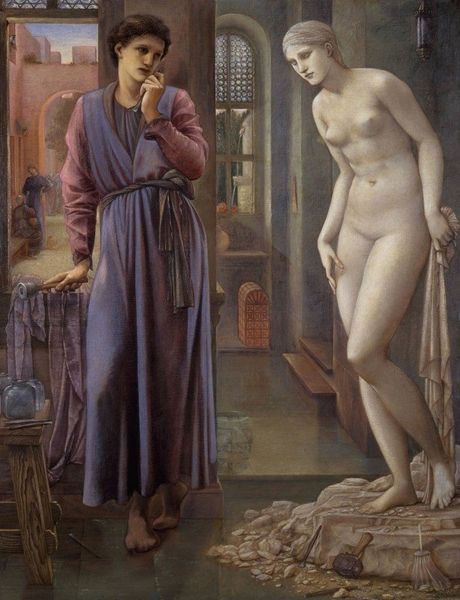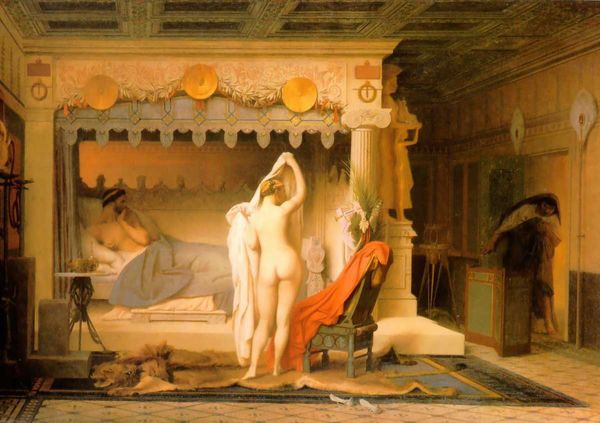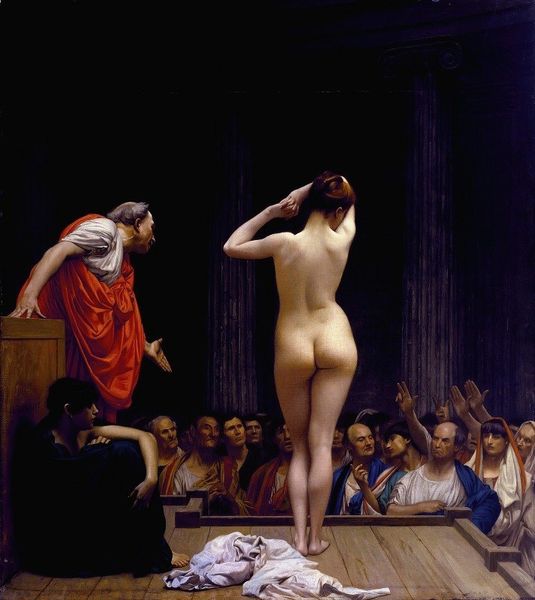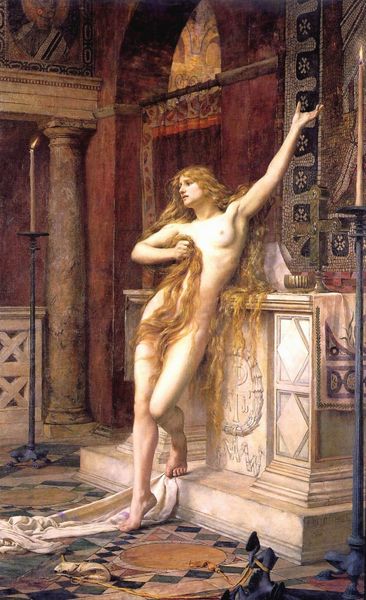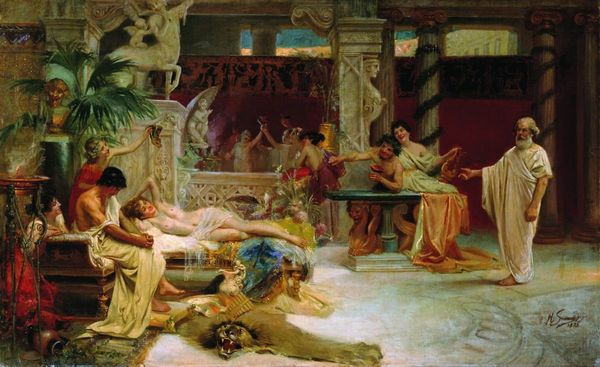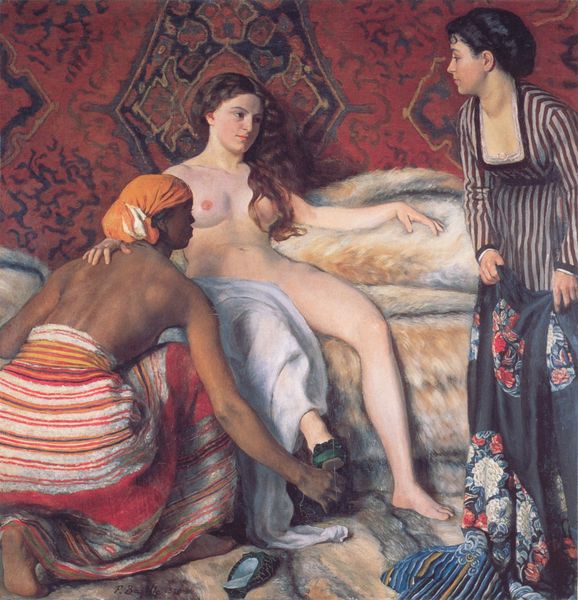
Dimensions: 88.9 x 68.6 cm
Copyright: Public domain
Curator: Here we have Jean-Léon Gérôme’s “Pygmalion and Galatea,” completed in 1890. It’s currently held in a private collection. What’s your initial take on it? Editor: The scene is intensely intimate, wouldn't you say? The life-sized statue seems to blush under Pygmalion’s gaze— and now his touch, it makes me feel a little uneasy. Is it celebratory, or…something else? Curator: Gérôme was a master of academic art, deeply influenced by Neoclassicism, and this painting really showcases that. It depicts the mythological story of Pygmalion, a sculptor who falls in love with his own creation, Galatea. Venus grants his wish and brings the sculpture to life. Editor: Right, I’m familiar with the myth, but seeing it rendered like this… Pygmalion is practically lunging, isn't he? There’s a sense of possession, of creation as conquest, perhaps mirroring anxieties surrounding artistic creation itself. It’s a loaded image when you look at the dynamics of male artist and female muse through a modern lens. Curator: Indeed, and that perspective is incredibly relevant. During this period, the roles of artists were being lionized while simultaneously solidifying gender roles and the male gaze within the artistic world. The staging even enhances that – his bare feet on rough blocks contrasted to her smooth, perfected marble come to life. Editor: And all those masks and sculpted figures in the background staring! The studio space itself is performing this transformation and the artist's perceived mastery over inert matter made animate. It raises a lot of questions about objectification and agency within the act of artistic creation. Is Galatea truly free? Curator: The composition absolutely emphasizes the male artist’s act of bringing something to life, perhaps symbolizing not just artistic power but the prevailing societal views regarding creativity and labor. But I also read his almost manic embrace of Galatea to represent anxiety around the male artistic legacy, with many schools teaching to emulate the master’s image and work in creating “life.” Editor: Yes, a perpetual cycle where woman is objectified as merely source material and where those who emulate this master practice feel both entitled and enslaved by its traditions. Food for thought! I find myself lingering, despite my unease, with new insight into how we’ve often valued genius above all else. Curator: Me too. Examining this artwork brings so many facets of cultural production to the surface. I really like how we interrogated what looks like another love story and the reality beneath it.
Comments
No comments
Be the first to comment and join the conversation on the ultimate creative platform.
